Advertisement
The ARTery 25
Sneha Shrestha, AKA 'Imagine,' Brings Her Native Alphabet To Boston's Burgeoning Street Art Scene
Resume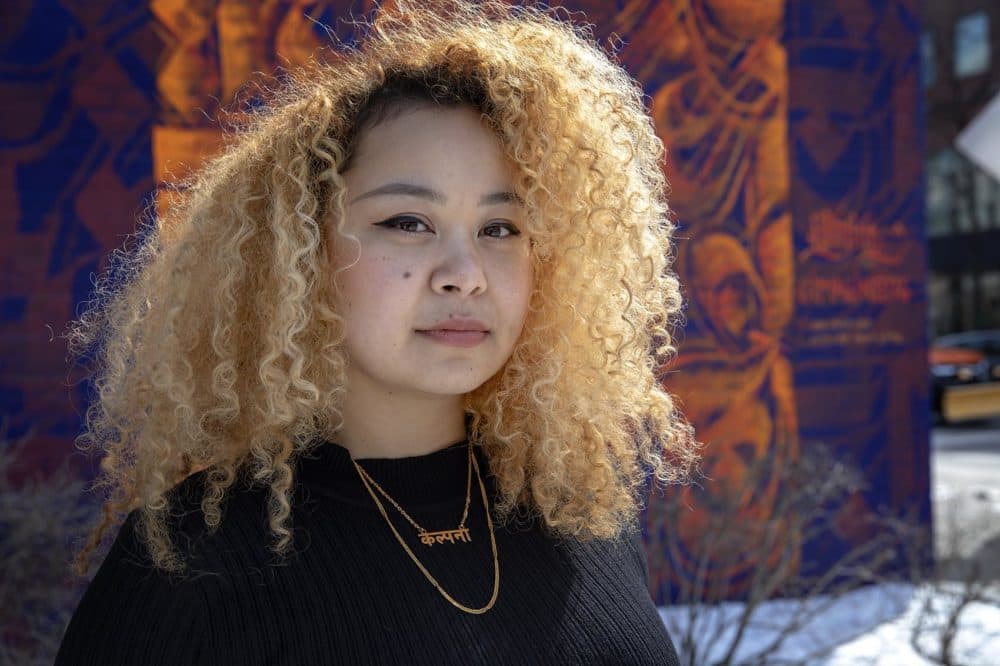
This profile is part of The ARTery 25, a series highlighting millennials of color making an impact in the Boston arts scene.
Sneha Shrestha remembers waking up at sunrise on Saturdays to lug a duffel bag brimming with brushes and spray cans to the legal graffiti wall in Cambridge's Central Square.
“This spot right here was my spot — well I made it my spot,” she clarified, pointing to the edges that delineated her former swath of brick.
That was back in 2011. Seasoned writers, mostly guys, trickled in to stake their claim. It’s a popular spot, so busy on weekends that if you leave for lunch your fresh art can get painted over before it’s even dry.
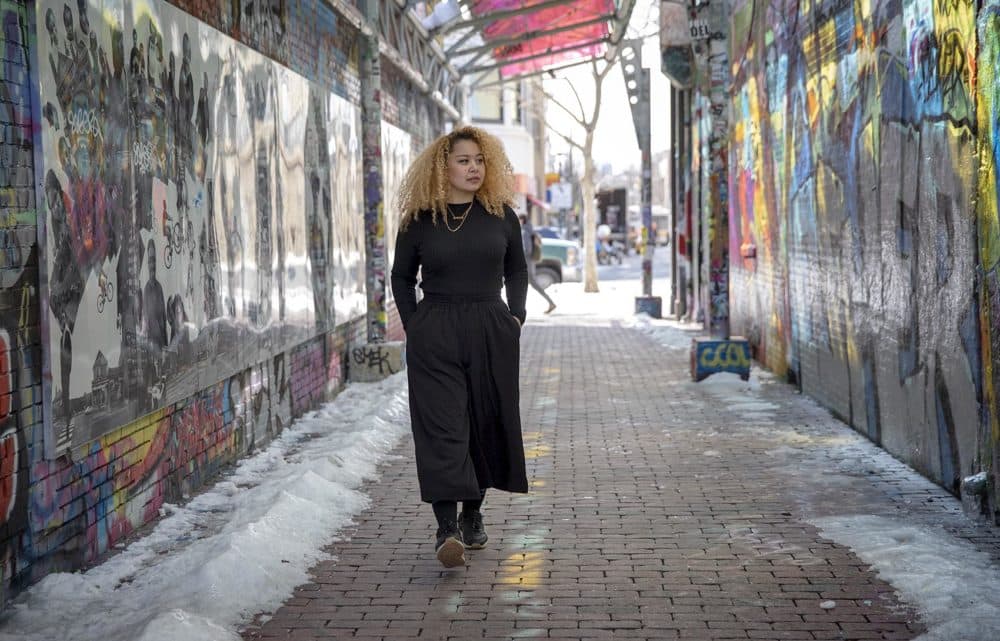
It’s where the Kathmandu native’s journey as an international street artist began. She's among a new generation of graffiti writers in Boston bringing diverse perspectives to our cityscape.
“I didn't have the aim of being an artist, I wasn't raised that way,” Shrestha explained. “You know, art is very much still a luxury in Nepal where basic needs aren't really fulfilled — so how can you really take the chance and be an artist?”
But that’s what she's been doing since graduating from Gettysburg College where she studied art. Soon after moving to Boston, Shrestha started working at Artists for Humanity, a nonprofit that helps teens tap into their creativity. Co-founder Rob “ProBlak” Gibbs became her mentor.
“He introduced me to graffiti and hip-hop culture,” Shrestha told me. “For somebody who didn't grow up with any of that it was just a mind blowing experience. Here you have an art form that's solely based on letters — and that's the subject of your art piece, and trying to show your style and your personality and your background through letters.”
Shrestha internalized techniques by first observing and photographing Gibbs and other longtime graffiti writers in action. Early on, her letter style was very “America-based,” he recalled. “Very clean, bold, simple — you could read it from afar. And she would do everything that she saw me do.”
She practiced outlines, filling, embellishment — but she struggled to find her own voice. Then, Shrestha started experimenting in her native tongue.
She took a half-full sketchpad to Gibbs and asked what he thought. “I was like, 'What's that?' ” he recalls. “To me it looked like art already,” and he asked Shrestha. “Why are you trying to do what we're doing? Why don't you do that!?”
And she did.
Shrestha got to work — finessing the curvaceous Sanskrit calligraphy. She experimented with vibrant reds, blues, gold she'd see in Nepal. And she adopted a street name: “Imagine,” which is her mother’s translated into English. Now you see her bold, curvaceous signature at schools, at corporate offices including Facebook's Boston office, on beer cans, in museum galleries and on walls around the world – from Istanbul to Copenhagen to Kathmandu. But a stunning concentration can be found here in Massachusetts. You can check them out in Worcester, Lynn, Cambridge and Dorchester.
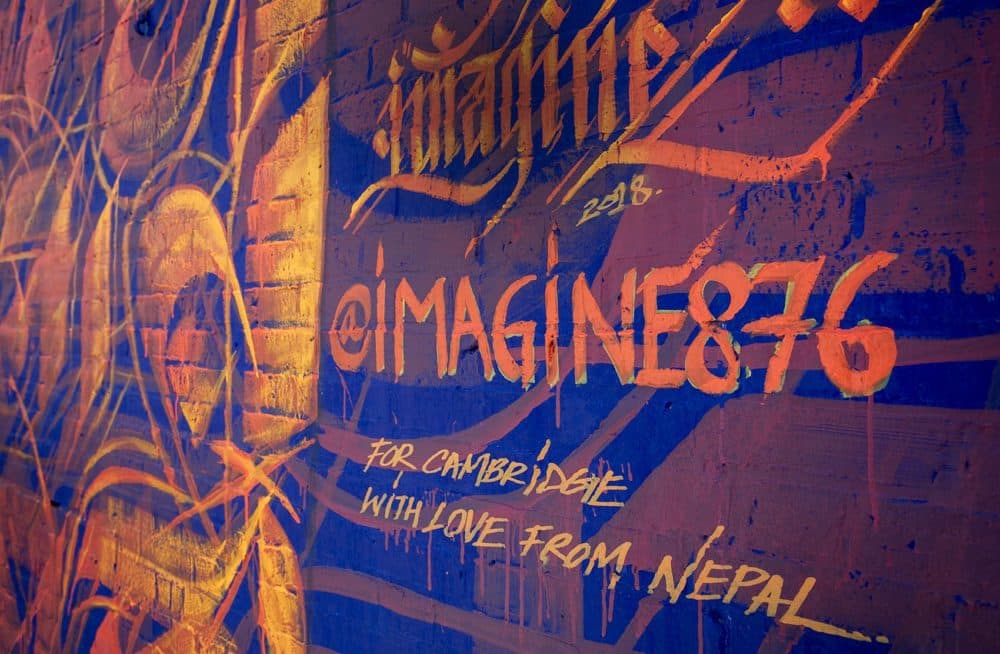
Gibbs says putting Nepali letters, words and phrases in our neighborhoods stokes curiosity and conversation.
"What it's doing is inviting somebody to look into and say, 'Hey, I love what you're doing, but what is that?' " he said. "It’s like if poetry came alive — and you froze it — and put it on a wall."
Shrestha is also pushing graffiti and street art’s legitimacy forward, Gibbs said. In 2018 she was a city of Boston's artist-in-residence, but he points to the fact that not too long ago paint on walls was widely viewed as vandalism. There's that infamous incident in 2009 involving Shepard Fairey, the artist behind President Obama's iconic "Hope" image. Fairey came to town for his big solo exhibition at the Institute for Contemporary Art. On the way to his opening, Fairey was arrested on two outstanding warrants for property defacement.
Boston has come a long way since then, Gibbs, said, and Shrestha is bringing her global aesthetic to Boston.
“How she's adding onto this landscape is the evolution of what we've traditionally saw — and the idea of the imagination of where it could go — she's actually delivered that to us,” Gibbs said. “For it to have that acceptance, for it to have the platform, she's setting that tone.”
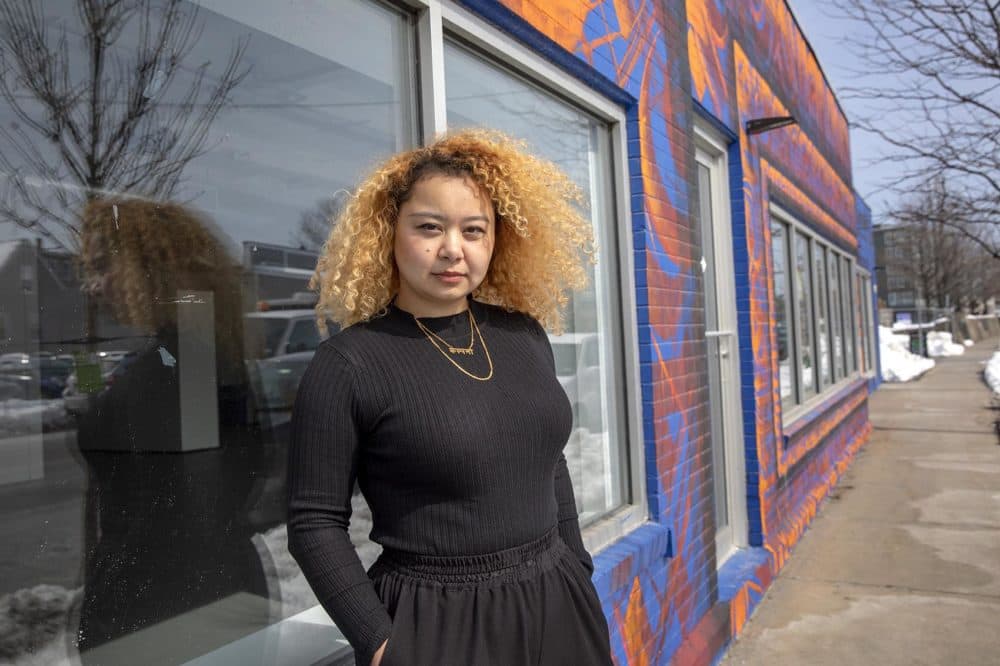
Shrestha believes that more art for people to experience will create a more colorful city. “You know we're a very diverse city with a lot of creativity, a lot of smart people — and we want to look like it, too.”
It seems Shrestha never stops looking for ways to explore, share and spark imagination. Teaching is a big part of that mission, too. “Being at Artists for Humanity and visiting museums around Boston made me realize the impact that art can have for young people,” she told me. She earned a Master’s degree in education at Harvard, and opened Nepal’s first Children’s Art Museum.
The week we met up, Shrestha was bouncing between her residency with Museum of Fine Art’s education department, her job managing visiting artists at Harvard’s Southeast Asia Institute, a mentoring project at MassArt, installing her new exhibition, "Golden Equinox," at Simmons University, and giving a talk about innovative creativity for designers at Reebok.
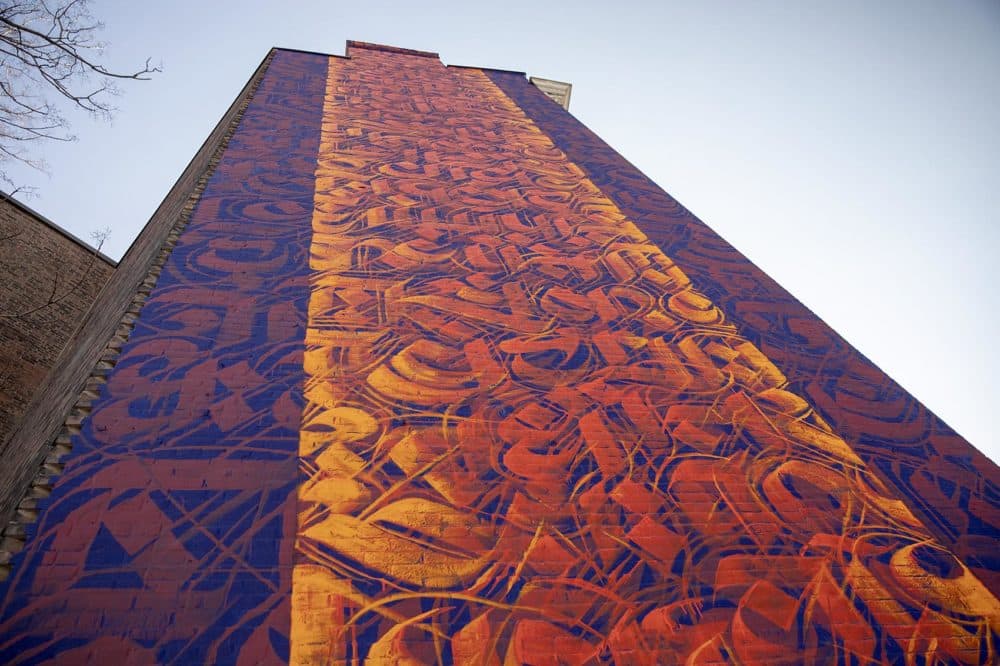
As we made our way over to her largest wall at the corner of Mass. Ave. and Main Street in Cambridge, Shrestha's passion for her many projects was palpable, but her overall vibe was serene. Luminescent yellow and orange Sanskrit letters loomed in the distance. Shrestha painted them on the flank of a five-story building just a few blocks from the free graffiti alley where she first put brush to brick.
Shrestha explained how all of her murals are site-specific. For this one, she layered wise words from a famous Nepali poet that pop off her vibrant, violet-blue base coat.
“It's a paragraph that roughly translates to: ‘Success is defined by what's in your heart and not your background,' " she said. “So where you come from shouldn't dictate your success. I wanted to share that at this perfect spot to paint.”
For Shrestha, the huge, Nepali letters represent her tiny country on the other side of the world. She also hopes people who experience them here will be inspired to imagine what’s possible for themselves.
This segment aired on March 27, 2019.
